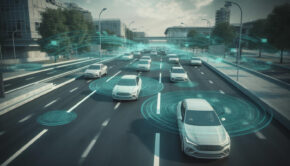What does AI have to do with Online Retail?
Artificial Intelligence(AI) is transforming the financial sector, particularly retail banking in various ways due to the technological advancements. Most of the banks today are in the starting stages of AI adoption. The AI technologies like predictive analytics and voice recognition are used by almost 32% of the financial executive participants, as highlighted by the Narrative Science Survey. Furthermore, a survey by Accenture has revealed that 76% of those surveyed strongly feel most banks will utilize AI interfaces mainly for customer interaction by the end of 2020. But, artificial intelligence is transforming retail banking in more than one way. I will let you know about this in the following sections.
Automated Services through RPA
The IT costs are a major problem to Retail Banking as they account for almost 10 to 15 percent of the total annual expenditures of a bank. Maintaining legacy systems account for almost 70 percent of the IT expenses of a bank while few of these costs are attributable to enhancing services or improving security. Nevertheless, AI provides an opportunity for decreasing these costs through automated services. For instance, RPA(robotics process automation) helps you in creating an automated platform to aid functions in different departments like back office support for off bad debt or front-line operational support for new account entry. By incorporating RPA into your AI strategy, the processes can be enhanced by improving productivity, performance and agility. For instance, the seamless integration of RPA with your infrastructure makes it simpler to process the credit card orders automatically and faster with accuracy and transfer data to your mainframe from web format. This improved process can decrease the time for executing tasks by 90 percent. Thus, this can lead to a much better customer experience.
Improved Customer Experience through Conversational Commerce driven by Chatbots
In retail banking, meeting the customer service demands has long been an issue for various banks. The customer service representatives can work physically for only few hours handling the customer issues. Also, they may not provide immediate reply to the customers and this in turn curtails the customers’ experience. Chatbots can offer solution for addressing these customer issues. The retail banking customers can get immediate answers to the questions and can make sound decisions, thanks to automation powered by this type of artificial intelligence. For instance, the chatbot digital assistant Erica of Bank of America enables the bank’s customers to make better financial decisions by providing financial advice depending on the banking habits of customers utilizing predictive analytics, AI and cognitive messaging. In order to reach a specified financial goal, the amount of money that the customer has to save is suggested by the bot like saving $100 for paying the credit card bill. The saving and spending habits of retail banking consumer is also suggested by the bot with the help of predictive analytics. The banking customers can also utilize the bot through mobile app or text messaging to ask questions and get financial advice.
While chatbots can enhance the experience of customer, they can also be utilized in retail banking to identify the emotions. With the help of this feature, they can utilize a preferred response that is sensitive to the needs of customer when considering the recognized emotion before responding. This enables the customers to get an experience that is more personalized.
Enhanced User Interfaces with Advanced Machine Learning
Simple navigation for mobile banking apps and online banking apps is a major strategy for retail banks to adopt as it improves the customer experience. Artificial Intelligence provides the user interfaces that are simplified and that the retail banking customers can navigate easily. The customers can quickly get to the pages they need to. The UI tactics including responsive design can make the online site content adapt to device that the customer is utilizing at the time for simple navigation.
Role Transformation
Without discussing the impact of AI on roles of retail banking workers, it is very hard to identify how artificial intelligence is transforming the landscape of retail banking. The integration of AI into society resulted in adverse impacts that have focused on how it can automate the jobs with multiple projections. This incorporate the automation of 47% of jobs in US by the year 2025. With the introduction of chatbots as well as assisted automated tellers that are capable of processing open accounts or loans and answer questions cheaper and faster than human workers, it is being translated to retail banking.
Artificial Intelligence also provides an opportunity for the change of roles in retail banking. A McKinsey report notes the potential for automating tasks and roles that need creativity and knowledge is less than the potential for automating jobs that need collecting and processing data, like financial data verification. This implies that an area of opportunity rests in preparing your bank tellers and various other people whose jobs have more potential for being automated for roles based on knowledge. This can be accomplished through leadership opportunities, mentoring and training.










![9 Ways to Use FOMO Marketing to Increase Sales [Infographic]](https://technofaq.org/wp-content/uploads/2019/11/ways-to-use-fomo-marketing-to-boost-sales-150x150.jpg)







One Response to What does AI have to do with Online Retail?